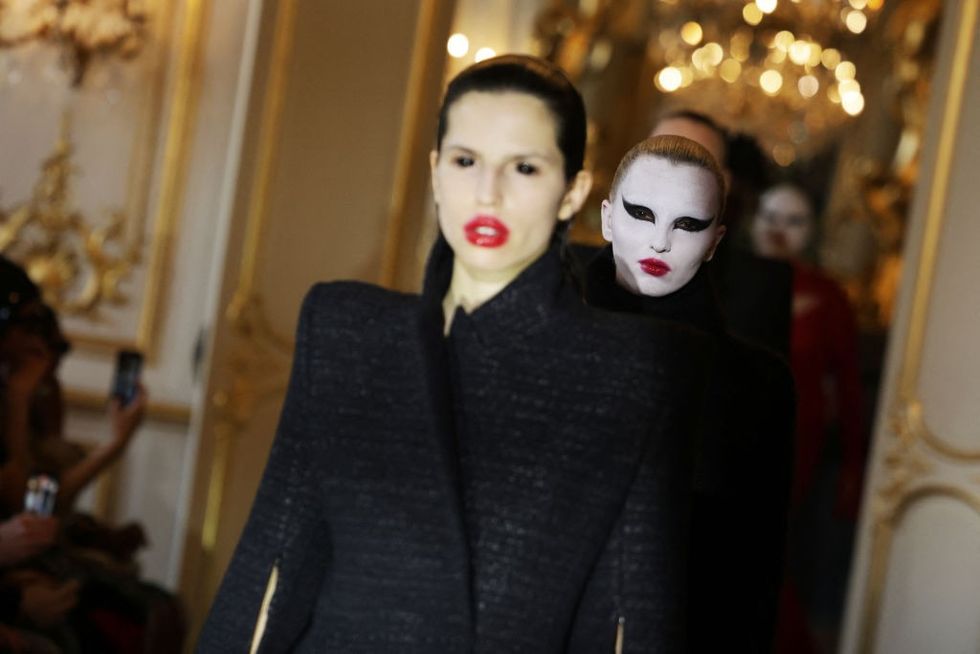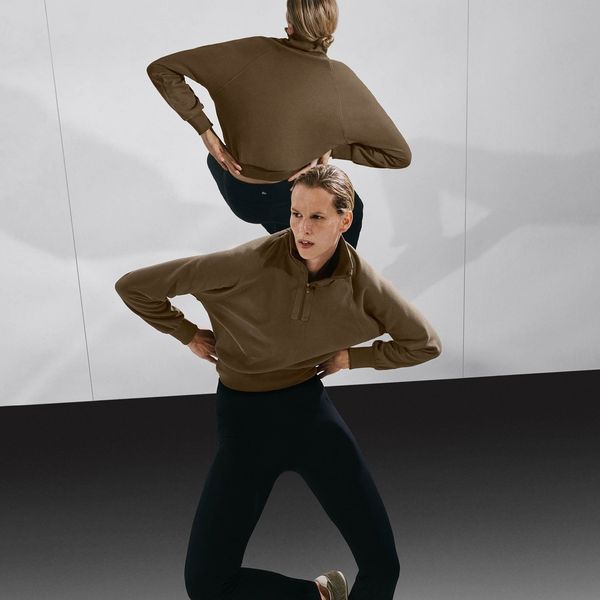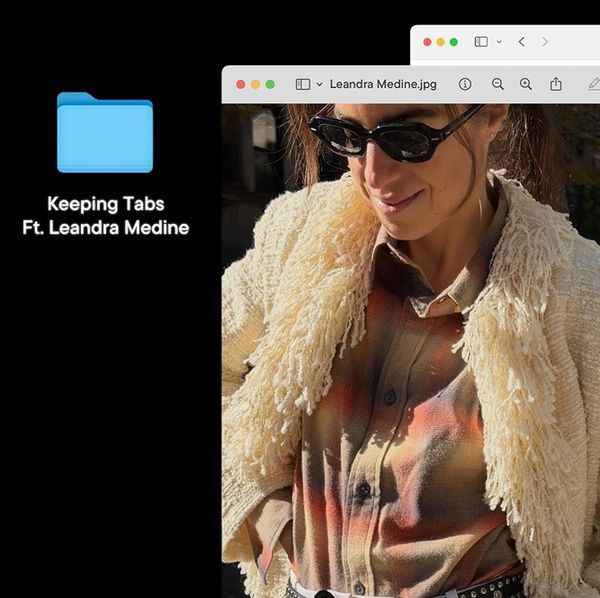Why Is Beauty Getting So Unsettling?
Runway makeup is getting darker, weirder, and harder to look away from. Here’s what that says about us—and the world we’re living in.

Fashion has always flirted with the absurd, the eerie, and the extreme. Theatrical visions from Thierry Mugler and John Galliano have long blurred the line between art and costume, while Balenciaga’s provocative runways continue to make us question our own thresholds for beauty. Beauty is an invaluable piece of completing a creative director's vision. When the clothing, beauty direction, and atmosphere coincide in a singular narrative, it fully immerses the rest of us into the designer’s world.
But when the beauty emerging down the runway is stirring in an alarming, discomforting way, it makes us contemplate the question: why? Themes of horror, the uncomfortable, or the surreal have always existed within art and aesthetics, but they felt more present than ever in the Spring/Summer 2026 runways collective—and it doesn't feel like a coincidence that the global community is experiencing peak angst right now, too.

Dilara Findikoglu S/S 26
WWD/Getty
Dilara Findikoglu’s S/S 2026 presentation remained consistent with her gothic world, teasing themes of capture, freedom, and innocence (or the lack thereof). Models at Matieres Fecales had enlarged obsidian eyes, blood-hued eyeliner, and ghostlike complexions that were both hair-raising and magnetic. Collina Strada centered the Jungian concept of the shadow self through both contrasting garments and abstract beauty direction. Luar, while more fantastical than daunting, channeled elements of the surreal through feather accoutrements that drew lines of connection between humans and animalistic features. Margiela models went viral for painful-looking contraptions that stretched models' mouths wide, like some sort of dental torture instrument. The overall beauty vibe for the season was an eerie sense of discomfort.

Matieres Fecales FW '25
Thibaud Moritz/Getty
Ashley Ysabelle, an editorial makeup artist, says embracing eerie aesthetics through beauty is something fashion has always done: “It’s about making people feel something visceral, to turn heads and provoke thought beyond the surface. Artists feel deeply, and with depth comes darkness.” Nebula, a multihyphenate creative director who cut her teeth in the industry as a makeup artist, has always been drawn to the intense honesty that can be found in darker beauty. Both artists believe that this engagement with gritty glam is a direct response to our current reality.
The world has always been on fire, as they say, and art and design have often reflected it. Today’s omnipresent fire looks like augmenting threats to democracy, economic security, privacy, environmental safety, and overall autonomy in the digital age. When violence is broadcast at unprecedented levels, we are left to reckon with our place amidst it all, and sit with the unsavory bits that live within ourselves. The tension that exists between darkness, scarcity, warped reality, and escapism seeps through our displays of beauty, prompting us to interrogate its place in social understanding.
Nebula believes the turmoil of the world is directly translating into the way we present ourselves, revealing how we are “anxious, confused, depressed, and wanting to be heard. It’s terrifying to live the way we are living right now, and we’re pushing this grotesque and dark art because that’s how we feel.” To her, beauty is a befitting tool to communicate our relationship to reality because it is a tangible daily practice of self-expression. “It’s your own personal rebellion, and it’s more than personal because what you are wearing directly affects what [establishments] are looking at and [what they have to acknowledge]," she says. "If we can’t say it, we can wear it."
Beauty creates the space to process the horror of everyday life, and at the same time brings nuanced layers to the surface in time of censorship. Our bodies can serve as the canvas through which we process overwhelming and unwelcome emotions, and when much feels out of our control, this practice is directly ours.

Maison Margiela S/S '26
Peter White/Getty
The funny truth about repellent visuals is how simultaneously irresistible they are. We're disturbed, yet can't look away. In many ways, we're not meant to. “The unconventional simply reveals the truths we often prefer to ignore,” Ysabelle offers. Denying the darker sides of ourselves does not erase them from existence, but instead creates an imbalance. She recalls a quote from the late Alexander McQueen, whom understood this dynamic intimately: “It’s the yin and yang… we all have it. Some people don’t like seeing it (evil), but I shove it in their face.”
Uconventional beauty can also be cathartic; Ysabelle calls the process a healing energy exchange. “Through that exchange, we both explore our emotions, insecurities, and strengths. I immerse myself in their world and push them to see new versions of themselves,” she says. Nebula also challenges her clients to experiment beyond their comfort zones. When she transforms them into someone unrecognizable, she finds that it “speaks to who they're maybe hiding on the inside. I've seen people brighten up after they see their face and I've painted it completely, almost as if wearing a mask somehow makes them feel more free.”
What much of these elements signal is a yearning for authenticity. This desire is amplified considering that everything across social feeds feels overly-edited, performative, or overstimulating.
In that regard, beauty’s role in social behavior can shift over time. Take, for example, the age-old phrase, “beauty is pain.” Nebula defines this expression as once meaning pain is the vehicle needed to achieve beauty. And in part, this still rings true, as Ysabelle suggests it reflects how much discomfort we may endure in the pursuit of self-expression and acceptance. Now however, Nebula believes it can also mean that beauty is the vehicle used to express pain.
Through this lens, the edgier, unfiltered representations of beauty are all the more important for us to cope and self-actualize. Conventional standards have long taught that ideal beauty is found in symmetry and perfection. “But real beauty isn’t symmetry,” Ysabelle argues. “The gritty sides of beauty—the raw, aged, or imperfect [parts of ourselves]—tell a story. That’s what it really is. A visual form of liberation.”
Art mirrors society; beauty mirrors the self. And if the current moment feels chaotic, anxious, or unrecognizable, it makes sense that our aesthetics would too. The macabre simply asks us to stop pretending—to look directly at the darkness, and see what’s reflected back.




